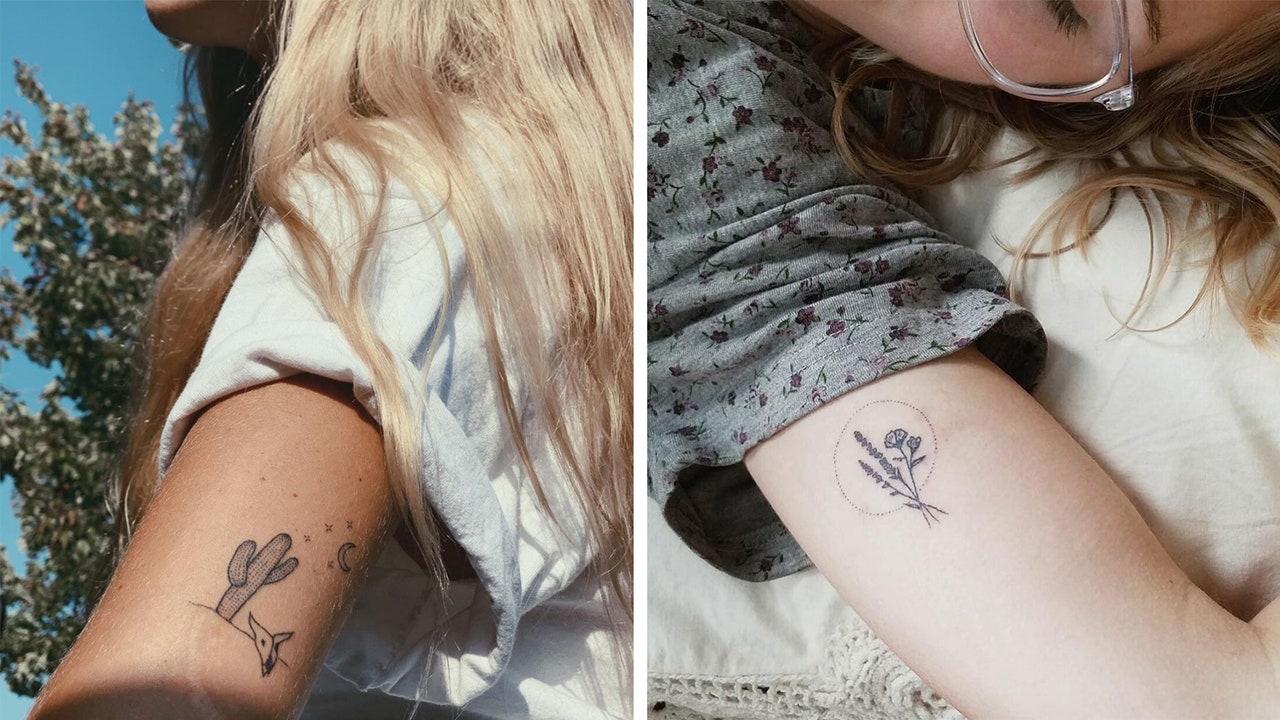Stick-and-Poke Tattoos Guide: How to Do It, Safety & More

Puzzles, tie-dyeing, baking banana bread—if we’ve learned anything from social media, it’s that we’re picking up all sorts of new hobbies. We didn’t expect stick-and-poke tattoos to quickly top that list, but six weeks into quarantine, here we are.
Tattooing with a machine requires expensive supplies, like cables and tubes you’d have some trouble sourcing spontaneously. But nonelectric tattoos (commonly known as hand pokes or stick-and-pokes) seem to circumvent those requirements, with a DIY vibe that has inspired many to believe it’s a quarantine-day activity as simple as cutting their bangs. While we’re fully in favor of the special aesthetic and experience that comes along with the technique, it’s important to note that professionals specializing in stick-and-pokes follow the same hygiene and sterilization procedures you’d expect from any other tattoo artist. Not to mention, they’re guaranteed to have done this more than once.
Since social media has undoubtedly changed the landscape of non-electric tattooing, we spoke to three of Instagram’s popular tattoo artists for an expert’s guide to stick-and-pokes. Below, everything you need to know before you get one—and why you might want to think twice before giving yourself the quarantine edition.
What are stick-and-poke tattoos?
Unlike typical tattoos, stick-and-pokes don’t require any electric tools, meaning they’re theoretically affordable and easy to do when you’re bored at home. The concept is fairly simple: If you go to a salon that specializes in hand-poke tattoos, the most commonly seen method involves attaching a tattoo-grade needle to a holding contraption, which allows ink to be easily applied to your skin. The technique lends itself particularly well to dot work or geometric patterns, but styles range widely, depending on the artist.
The act of non-electric tattooing goes back long before quarantine stick-and-pokes began popping up online—actually, before machine-done tattoos even existed. Prehistorical mummies bear designs of hieroglyphics and animals, although stick-and-poke as we think of it now is more directly linked to ’70s skate punk subculture than to ancient Egypt.
“This has been going on for thousands of years,” says New York tattoo artist Jenna Bouma (you may know her as SlowerBlack), who specializes in hand-poke tattoos. “In a historical sense, non-electric tattoos have been used as a status marker, an expression of beauty, and an open act of rebellion. It was and still is important to certain cultural groups. But what truly has made this form of tattooing popular in a modern sense is Instagram.”
Why stick-and-poke tattoos are so popular
For many customers, stick-and-pokes are among their favorite designs. Bouma says that some of the appeal—for her especially—involves the underground, punk associations. “In 2008, in western Canada, this was not a common practice to come across,” she says of her hand-poke beginnings. That uniqueness continues to draw in plenty of people.
